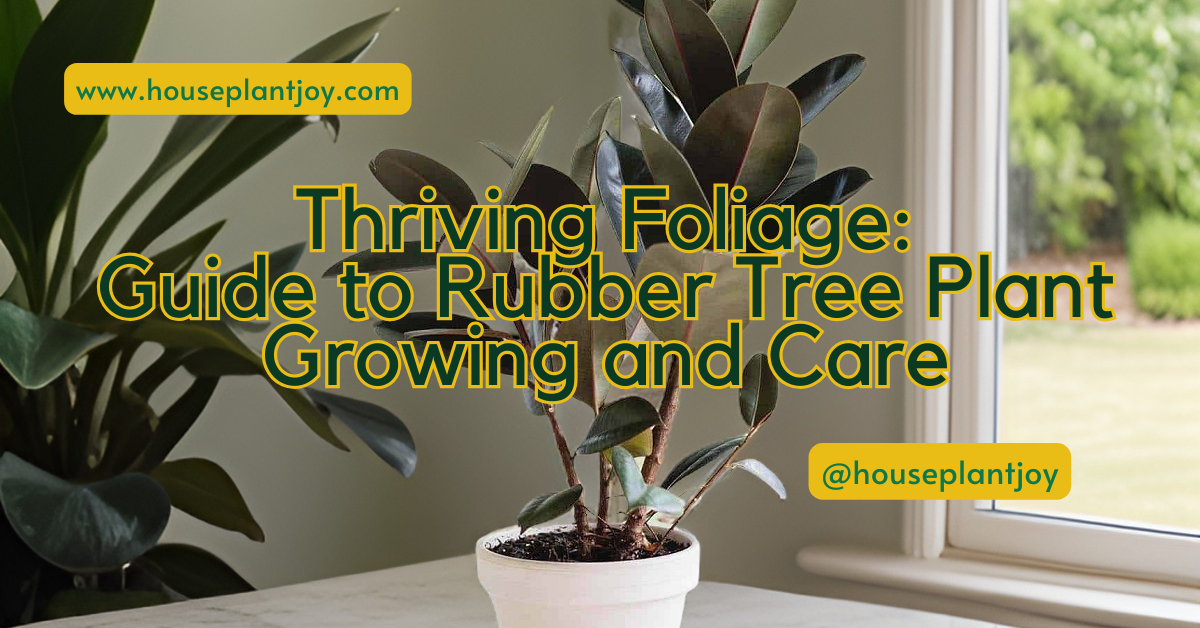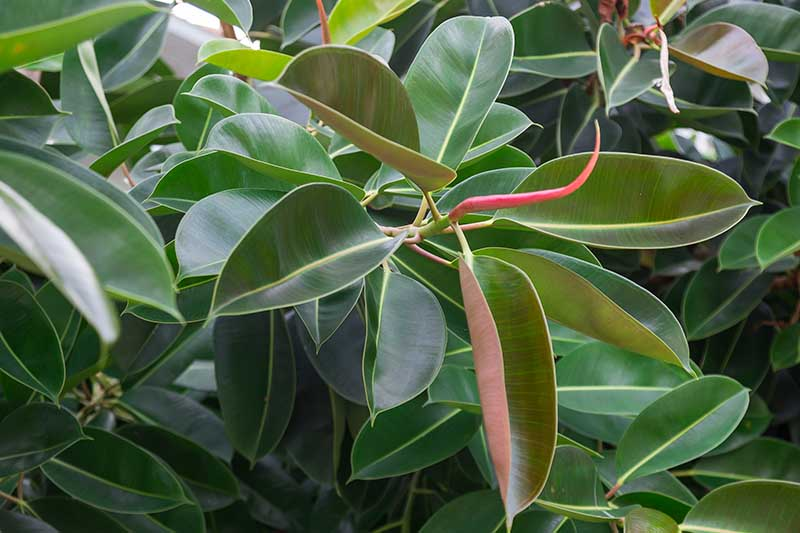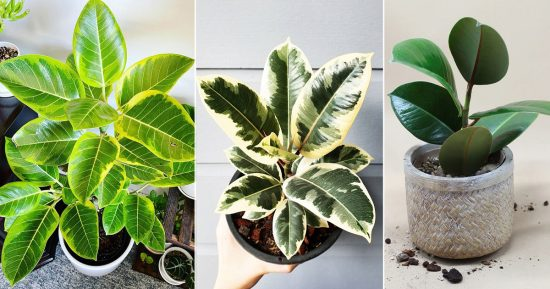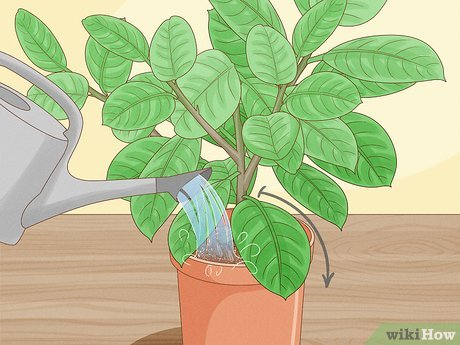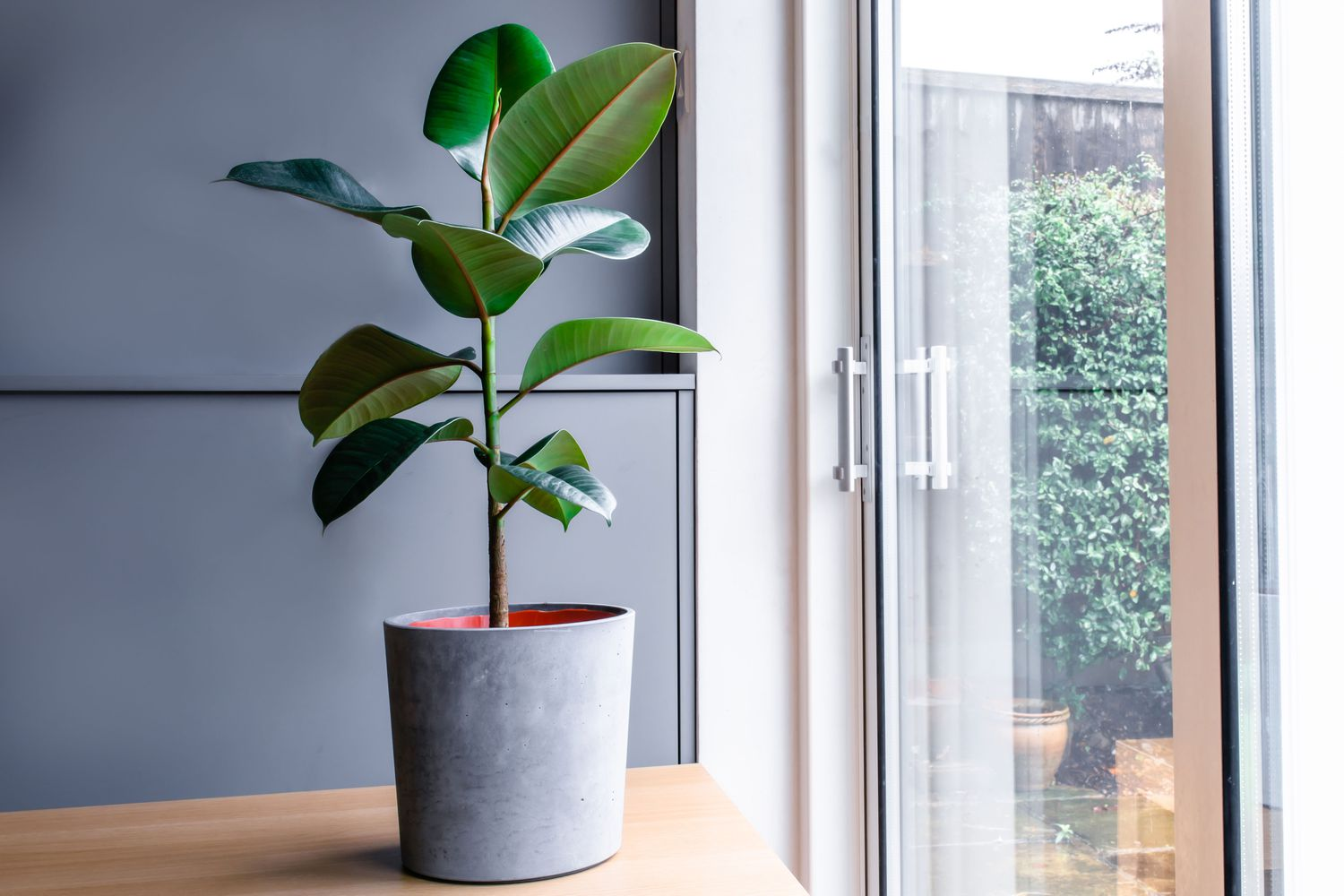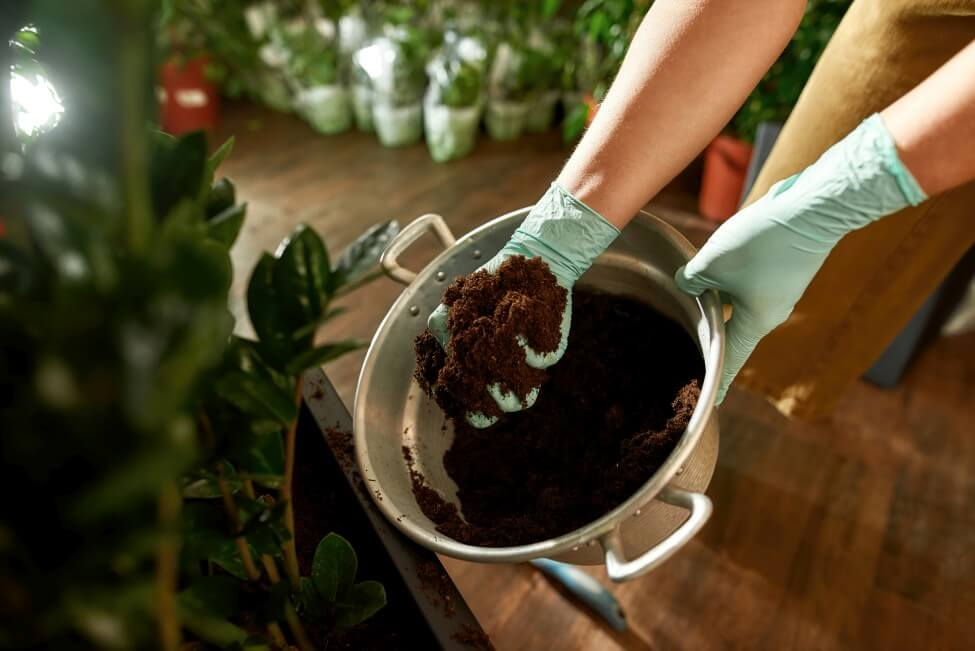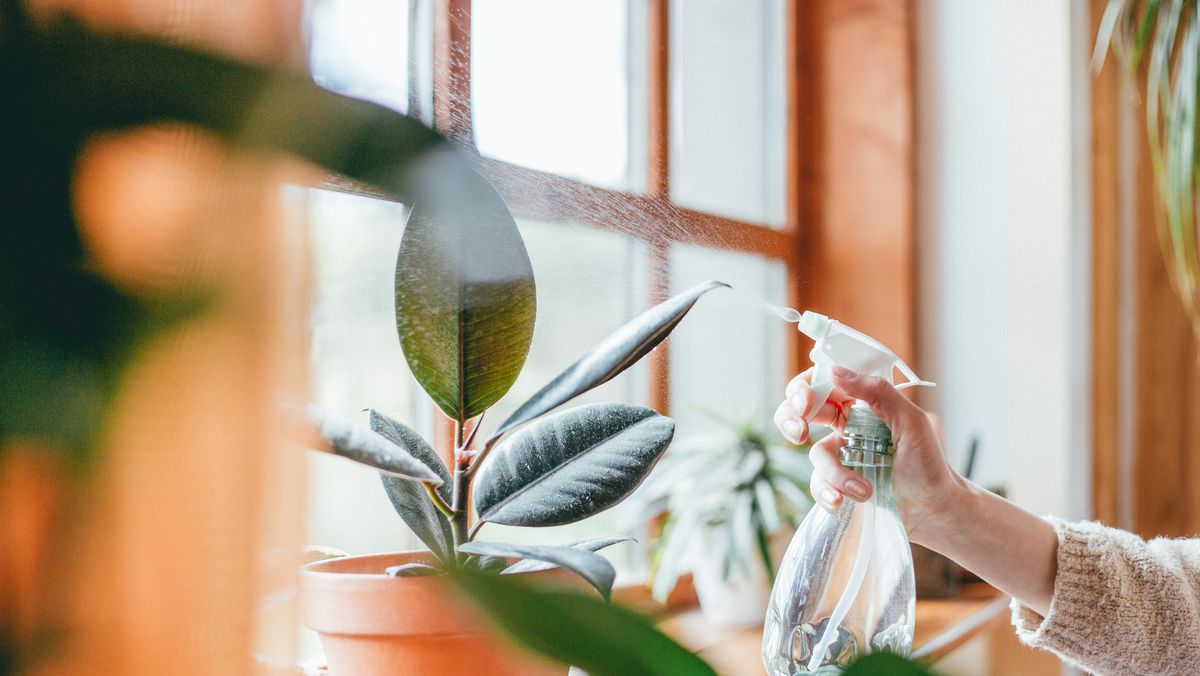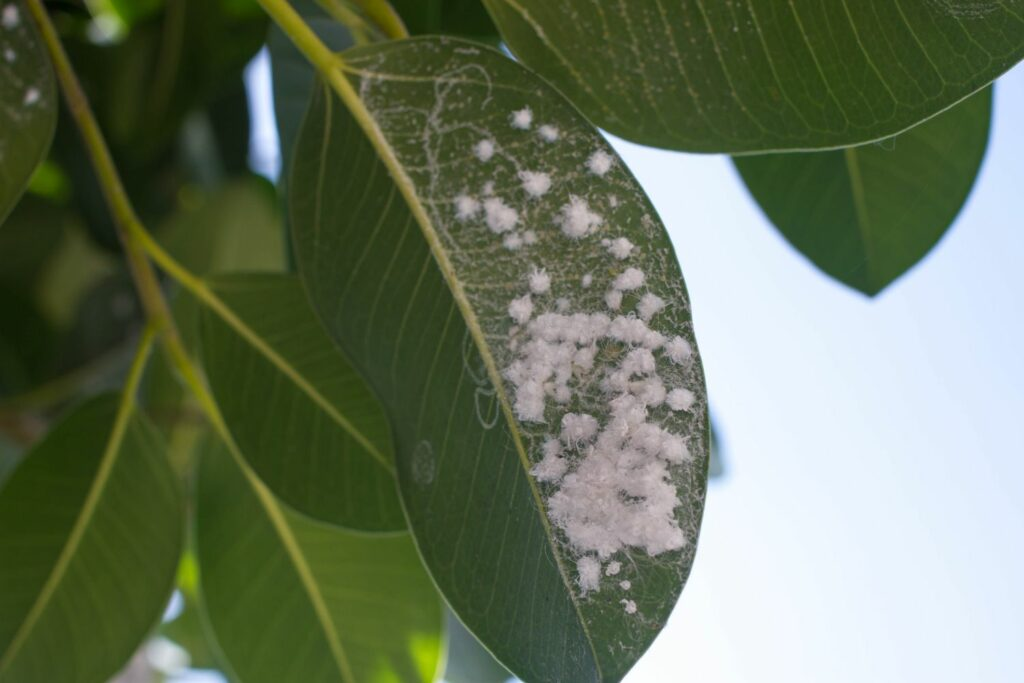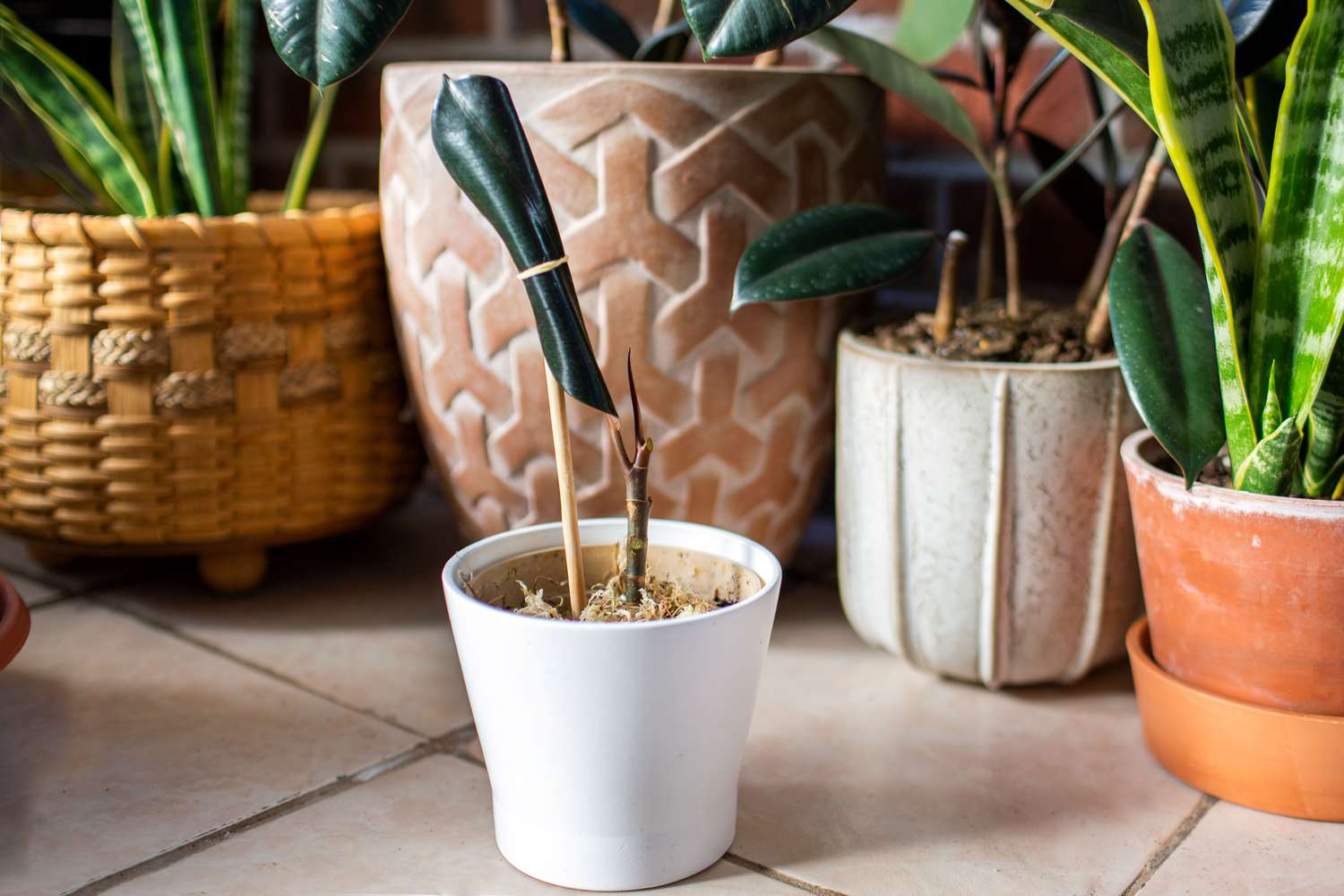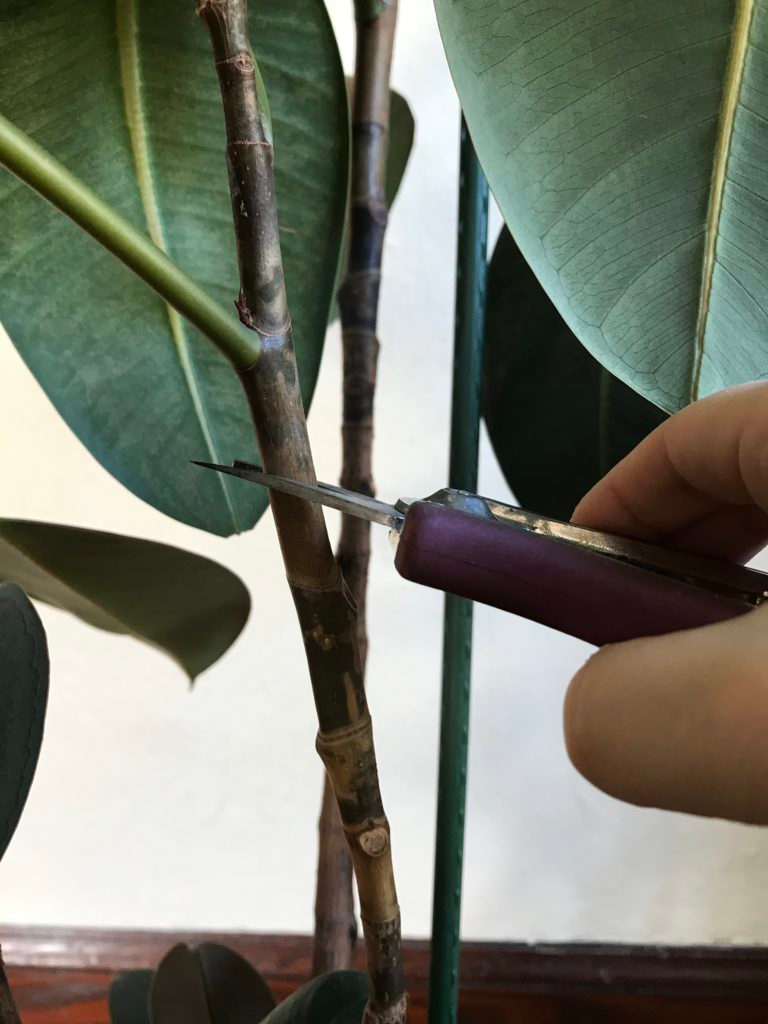HousePlantJoy is supported by our audience. When you purchase through one of our links, we may earn a small affiliate commission. As an Amazon Associate I earn from qualifying purchases. Your cost is not affected.
==================
Hey Plant Enthusiasts! Ready to embark on a leafy journey? In our guide, “Thriving Foliage,” we’ve got the inside scoop on everything you need to know about growing and caring for the fabulous Rubber Tree plant. Whether you’re a seasoned plant parent or just starting your green adventure, you’re in for a treat. Let’s dive into the world of lush leaves and thriving greenery together!
Rubber Tree Plant Unveiled
Photo by: Gardener’s Path
Ficus elastica, commonly known as the rubber or rubber tree plant, has become a cherished household thanks to its captivating waxy leaves and impressive stature. Coming from the vibrant terrains of Southeast Asia, these plants can reach staggering heights of up to 100 feet in their native habitat; if you’re wondering whether you can grow them indoors, worry not! When embraced as domesticated houseplants, rubber plants typically grace our homes with a more manageable height, ranging from six to ten feet. These tree-like wonders are renowned for their impressive height and the beauty of their leaves. With various varieties and colors available, rubber plants effortlessly complement any home decor theme, adding a natural grandeur to your living space. Here’s a heads-up: your rubber plant comes with a couple of things to keep in mind. First, the sap might not be the best pal for your skin, so wash your hands thoroughly after hanging out with it. Oh, and if you’ve got pets, keep an eye out. Furry friends and rubber plants might not be the best combo. Safety first, for you and your critters! Easy, right?
Varieties of Rubber Tree Plants
Photo by: India Gardening
Dive into the world of Ficus elastica varieties, where each type brings its unique charm to elevate your indoor greenery game!
- Ficus Elastica: This classic green beauty, known for its large and leathery leaves. The robust and glossy foliage adds a touch of elegance to any space, making it a beloved choice for indoor greenery enthusiasts.
- Ficus Elastica Tineke: A true showstopper with stunning variegated leaves adorned with creamy white edges, adding a touch of sophistication to your green collection.
- Ficus Elastica Burgundy: Make a bold statement with this variety, boasting striking deep burgundy leaves that effortlessly inject color into your plant ensemble.
- Ficus Elastica Rubra: Experience a dynamic transformation with reddish-brown new growth that matures into a deep, lush green, showcasing the vibrant journey of this remarkable plant.
Rubber Tree Plant Care and Growth Guide
Photo by: House Beautiful
Here’s a quick guide to keeping your rubber tree thriving:
Watering
Photo by: wikiHow
During the summer, your rubber tree plant craves hydration, so be generous with the watering. Aim for moist soil, not a soggy mess, and treat your rubber plant’s leaves to a spa day with a gentle wipe-down using a damp cloth. This keeps them hydrated and primes them for soaking up sunlight. If leaf pampering isn’t your thing, a quick misting will do the trick. And remember the golden rule: well-draining soil is a must to fend off the dreaded root rot.
As winter sets in and your rubber plant enters a dormant phase, putting them on a hydration diet is time. Ease up on the watering, letting the upper soil layer dry out between watering sessions. Keep a close eye on those leaves – if they start drooping, it’s your rubber plant signaling a need for more water. Strike the right balance to avoid your plant’s leaves dropping due to dehydration, finding that sweet spot between dry and too dry.
Light
Photo by: The Spruce
Okay, let’s keep it simple. Rubber plants love bright, indirect light, but don’t throw them into direct sunlight – that’s a leaf-scorching disaster. Stick them near an east-facing window, maybe toss in a sheer curtain for that filtered sunshine effect.
Now, the fancy variegated ones want even more light to show off their colors. Don’t hide them in a dark corner; they’ll stretch out on a mission. Move them to a brighter spot, and voila, problem solved.
The tricolor variegated type is a bit high-maintenance, especially the white part. It’s a light-loving diva that might get “burned” if it’s too sunny. Keep an eye out for crispy leaves – not a good look.
And here’s the drama alert: if your plant’s tips turn brown, it’s like a light SOS. They’re getting too much, so switch it up. An east facing window is their happy spot – just the right amount of light, especially when you throw in a sheer curtain for that perfect touch. Easy peasy, right?
Temperature
Photo by: Good Housekeeping
So, your rubber plant, the rockstar of houseplants, likes things cozy. We’re talking temperatures between 60°F to 75°F – not too hot or cold, just the sweet spot for this healthy rubber tree houseplant. Even in the chill of winter, it’s a survivor, hanging tough down to 50°F.
Now, just like it has its preferences for water and sun, this plant is all about that ideal temperature balance for growth. It’s of tropical origin, so it’s a fan of moist and humid air, but it can also tough it out in less humid spots. Here’s the thing, though – this rubber plant is a bit like a temperature snob. It doesn’t like surprises. Consistency is its jam, especially when it comes to humidity and temperature.
As nature gears up for a revival in spring, your rubber tree houseplant is ready to join the party. Keep it comfy, not too hot or cold, and watch it thrive.
Potting and Soil
Photo by: Petal Republic
So, you’ve got yourself a shiny new rubber tree plant – awesome! Now, let’s talk potting. At the same time, the temptation might be to toss it into a spacious pot for growth galore. Rubber tree prefers a bit of a snug fit. Think of it as a cozy home for your plant, so no need to go overboard with the pot size.
When selecting a pot, aim for perfection – maintaining approximately 2 inches of soil around the entire diameter is the ideal balance. This gives your rubber tree the perfect space to grow and thrive in its new environment. Now, onto the soil – the rubber tree loves a well-draining vibe. An all-purpose indoor potting mix is cool, but if you want to kick it up a notch, throw in some extra perlite for added aeration.
Speaking of perlite, it’s this volcanic rock stuff, and you can snag it at most garden stores. Once your plant is settled in its new pot, find the perfect spot and let it be. Rubber trees are a bit like homebodies – they don’t like change. So, if a leaf falls or you notice some dropping leaves after the potting party, there is no need to stress. It’s simply your plant acclimating to its new surroundings. Give it some time, and soon enough, it’ll be right at home.
Fertilizing
Photo by: House Beautiful
Your rubber plants are like hungry buddies that love a good meal. Here’s the scoop on caring for rubber during the growing season – it’s like their feast time. Spring and summer are the party months, so you whip out the fertilizer to ensure a healthy plant. When fall and winter show up, give your rubber tree a break – it’s chill time.
Here’s a good rule for these heavy feeders: toss in some liquid fertilizer every other time you water. It’s like a smoothie for your rubber plants, spreading the goodness evenly. Look for a fertilizer with NPK on the label. “N” is for nitrogen, making your plants all green and lush. “P” is for phosphorus, keeping the roots in top shape. Lastly, “K” is for potassium, directing nutrients where they need to go. But a heads up: don’t overdo it on the fertilizer.
Pest
Photo by: Plantura Magazin
Let’s talk about keeping your rubber plant bug-free – it’s part of the care routine, you know? So, pests like mealy bugs, mites, scales, and aphids might decide your rubber plant is a cozy home. Sneaky little fellas! But no worries, if you catch them early, it’s like a quick eviction process. Grab a warm soap and water solution or insecticidal soap and wipe down those bugs.
Repotting and Propagation
Photo by: The Spruce
Alright, let’s chat about two cool things for your rubber plant: repotting and making new plant buddies.
- Repotting: Repotting is like giving your rubber plant some breathing room to stretch and grow. You should do this every few years or annually, depending on how big your pot is and how speedy your plant grows. But hey, if you’re into the current size, there’s no need to fuss with repotting.
- Propagation: Now, let’s talk plant matchmaking – propagation. One easy way is to grab a small branch from your healthy rubber plant and let it root in either soil or water. Just make sure the sap from the stem dries out before you pop it in. Another cool method is air layering. Picture this: make a cut in a healthy plant, stick a toothpick in the cut, pack damp moss around it, and then cover it up with plastic wrap. Once you spot roots in the moss, snip the branch and plant it in fresh soil. It’s like making mini rubber plant clones! How cool is that?
Pruning
Photo by: Leaf and Paw
So, pruning is like a plant haircut for your rubber buddy. It helps it stand tall, encourages fresh growth, and keeps its size in check so it doesn’t go all jungle mode on you. The ideal time for this green spa day is spring, when your plant is gearing up for a growth spurt. But truth be told, you can trim it whenever you feel like it; rubber plants are pretty chill that way. Quick heads-up: when you snip those branches, expect some sap action.
Thriving Rubber Tree Plants
In a nutshell, that’s the scoop on nurturing happy rubber tree plants! We’ve covered everything from picking the right variety to mastering the art of watering, light, and temperature. Remember the potting and soil basics, keep those heavy feeders content with a balanced fertilizer routine, and stay vigilant against pesky pests.
And hey, if you’re feeling adventurous, dip your toes into the world of repotting and propagation – it’s like matchmaking for plants. Finally, give your rubber buddy the occasional haircut (pruning), and you’re all set! So, armed with our guide’s wisdom, let your rubber plants thrive and bring that touch of green magic to your space. Happy growing, plant pals!
FAQS
Are Rubber Trees Hard to Keep Alive?
Rubber trees are quite resilient and not too demanding. They can thrive easily with some basic care like proper watering, light, and occasional pruning. Great for both beginner and experienced plant parents!
Are Rubber Trees Safe for Pets?
Keep an eye on pets; some might nibble. The sap can cause mild irritation.
Why Should You Join Us?
🌿 Get insider secrets: Unearth the best-kept tips to keep your plants thriving and blooming like never before.
🌱 Expert advice: Gain access to our team on Facebook, Twitter, and other social media channels, and meet our gardening experts eager to help you on your plant journey. 👩🌾
🌷 Engage with like-minded souls: Connect with fellow plant lovers, exchange stories, and build a supportive community.
Join us today! Follow Houseplant Joy on Facebook, Instagram, and Twitter for daily inspiration and a blooming good time! #HouseplantJoy #GreenThumbsUnite #HouseplantLove 🌺✨

